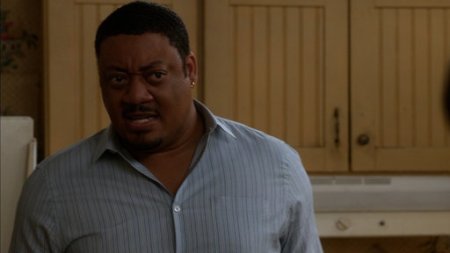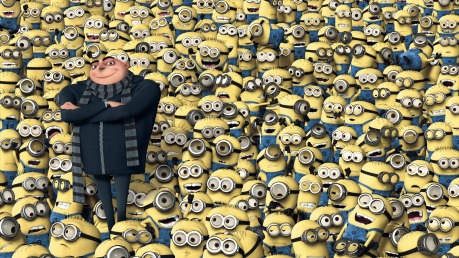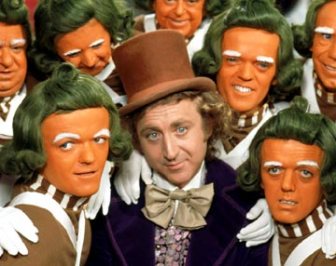Update: For a related post on orcs, see this related post, Orcing the Other.
Magical Minions: Dominance and Diversity in the US Popular Media
Privilege and Performativity
Privilege is a complex concept that has different meanings in specific contexts. I’m just back from the Judith Butler conference at the Vrije Universiteit Amsterdam, and one of Butler’s responses to a question has stuck with me when thinking about intersectionality, specifically in terms of how feminism, racial justice, and postcolonialism interrelate. After her public lecture, Butler was asked why she speaks of inequalities of power more often than of privilege. During her reply, she noted that (broadly paraphrasing here) privilege is a social attribute, something that you bear, like a heavy load. I took this to mean that she doesn’t like the term because she feels it incorrectly implies that inequality is simply superficial. If you just carry privilege around, instead of being infused with it, then it mistakenly suggests that you could simply take it off one day. Butler rightly disagrees with that impression.
What surprised me, though, is how different it is from how I’ve been thinking about privilege. Indeed for me the benefit of using the word privilege is that it indicates how power materially and discursively shapes one’s empirical worldview. That is part of what I developed in my dissertation and forthcoming book on maps. Butler is famous, among other things, for theorizing performativity, including (to give a potted history of an entire subfield) how gender is a performance. Gender isn’t a given. Instead it’s something that we do/say, that we reinforce over and over again in every moment, but also something that changes with every new performance.
In combination with that, I would say that privilege extends the literature on performativity. It demonstrates how that kind of performance is shaped in particular contexts and through particular perspectives that are formed through privilege. Privilege then can be both social/material context and the ways that it infuses everything. It also can be performed in the sense, for example, of assuming something about someone else based on past experiences. Privilege also can grant one the ability to not see something, such as everyday racism, to not have to engage with it, to not be affected by it. For the privileged (and in important ways I fall into that category, although in other ways I do not), we don’t have to actively try to be racist. To be racist, white people only have to do nothing about racism. Privilege, then, is the privilege to not be affected yourself, and to do nothing. That’s because racism, and privileging whiteness, particularly in Europe and North America, is the default, the fallback, and the norm. There is a large body of academic work on white privilege, and the incredibly valuable writings of Sara Ahmed on being a killjoy as a response to oppression, including thorugh the narrow “diversity work” of many universities.

Sublimated Selves
Studies of popular culture are also helpful in making racial privilege visible to those of us who have it. To that end, I’ve also been thinking about a trope that crops up often in popular culture. I am referring of course to the magical negro (MN).The MN trope reclaims the offensive and outdated racist term negro, using it critically in order to reference the enduring economic, social, and political subordination of people of color by whites. It’s been written about by academic researchers like Zuleyka Zevallos as well as Glenn and Cunningham, journalists like Tomi Obaro. In fiction and literary criticism, importantly by Nnedi Okorafor-Mbachu.
Please note: The above list is by no means exhaustive, but much of what I talk about in this section of the post comes from their work. So particularly with respect to MBPs, please read and cite the authors I link to, both above and below, before you would read or cite me. (That’s assuming anyone gets this far in the post.)
So, in light of systemic racism, the section below, which is on the MN trope first requires one caveat. It is difficult to reclaim a racist term from a position of racial privilege, like my own. So I will refer to the trope as the ‘magical Black person’ or MBP throughout. This use is not in any way a criticism of the original MN and its use by scholars and activists of color. Instead, while still drawing on their foundational work, I’ll use MBP as an attempt to acknowledge that, as a white scholar, it does not have the same satirical effect if I were to repeatedly employ a racist term. For I cannot reclaim ownership over a term that white people have long used to achieve drastically discriminatory ends. I think MBP is less interesting of a term than MN, and perhaps that is fitting, in this context.
The literature on MBPs has far reaching import. It provides a cogent illustration of how a character might be fully incorporated into a narrative, yet nonetheless in a way that renders it into a subordinate role. It also demonstrates the extra-discursive pressures that can be placed, in particular contexts, upon those who challenge their appointed role. In comparison with openly negative stereotypes, such as those of African-American women and men, MBPs appear to be positive. But as many have pointed out: positive stereotypes are still stereotypes. (I’m looking at you, noble savage.) Analysis of MBPs highlights the deeper concerted lack of creativity and heterogeneity in seemingly positive depictions of African-American characters in US popular culture.
Further popularized by Spike Lee, MBPs are Black fictional characters whose sole function in a narrative is to ‘magically’ help whites. The critical use of the MBP trope therefore provides a cogent critique of fictional narratives that, on their surface, appear to celebrate the contributions of African Americans but who nonetheless systemically, through the repetition of stock characters in subordinate roles. Although cast in a positive light, such roles refrain from ever allowing Black characters to break out of historical stereotypes and move into a focal and individuated role in the script. Examples of MBP characters include Bubba Gump in Forrest Gump, Morpheus in The Matrix trilogy, and a long list of African American characters in films based on books by Stephen King, including Dick Hallorann, the cook in The Shining. MBPs have also been lampooned, including through the character Kenneth Clements, played by actor Cedric Yarbrough, in the TV comedy Speechless.
MBPs are generally provided with only minor character development and backstory. They often appear to be elevated, or even venerated for their magical properties, they remain subordinate because they do little other than assist the development of the white characters who remain the focus of the story. To make matters worse, often once the white character is saved through the—generally underappreciated—labor of the MBP, then the latter either dies or drops out of the narrative without comment. Part of this results from resistance to changing narrative structures that almost always revolve around a white male lead. Instead diversity is included only through supporting characters, that are viewed as expendable as a way to create drama and move the story forward. Racial diversity is used as an add-on, then, to add interest without broadening the narrative.
Many authors who draw attention to these concerns are themselves avid observers of, and contributors to, popular culture, however, so the focus tends less to be upon criticizing individual works per se, than upon showing the pattern of repeated stereotypes in order to open up the possibilities for a wider variety of narratives. The MN focuses on African American characters, but there are variations and additional tropes for different groups, although the (intersectional) specifics of race, gender, and class all matter. To give a few exasmples, commenters have also noted “magical Asians” and, in critiques of gender, related tropes like the “manic pixie dream girl” who is used solely to spark the development of a male lead manic pixie dream girl. Traditionally, lesbian characters also nearly always die before the end of the story.

Magical Minions
This existing cultural scholarship on racism in popular culture in Europe and North America also points the way to an analysis of how international, including international-indigenous, characters are depicted in popular media. Building on the work on MBPs, I’ve been thinking about a related trope, that so far I’ve been calling the magical minion (MM). Here the term minion refers to how some characters are depicted as lesser than others. It is not in any way meant to suggest that the groups these characters are actually somehow less than others, but rather to criticize the fact that they’re routinely portrayed in an unimaginative and stereotyped way.
Whereas MBPs focuses on Black American characters, and particularly in the US media, magical minions can refer to the ways that international characters are narrowly incorporated into the dominant media. Many of these ways are easily recognizable to anyone who’s ever seen a cartoon or popular film. One thing that’s notable is that all kinds of supposed “foreignness” tend to be lumped together, particularly in the US and UK popular media. So MMs might include first-generation immigrants, such as Apu and Majula, the owners of the convenience store in The Simpsons. But they also can include indigenous characters that are presented in a way that is intended to be read as ‘charmingly and benignly foreign’ to people of privilege. Such characters need not be from a current or historical country. The political concerns about stereotyping someone from an existing nation are sometimes avoided by creating fictional nations and races. Examples of this include the minions from the Despicable Me franchise, the oompa-loompas in Charlie and the Chocolate factory, house elves and bankers in the Harry Potter series, Oods in Dr. Who, dwarves in Snow White, and elves in the Wizard of Oz series and depictions of Santa’s workshop.
Fantasy literature includes a host of invented races and nationalities who conform to the MM trope to varying degrees. They include the dwarves and elves of the Lord of the Rings trilogy, demons and vampires in Buffy the Vampire, and the race-species hybrids in video games like Skyrim and World of Warcraft. There are also relevant stand-alone characters, including Short Round from the Indiana Jones trilogy, Passepartout in Around the World in 80 days and Queequeg in Moby Dick. There are also books that turn this around and reclaim characters that, in other works, have either been left out of many narratives or, where included, as MMs. Laila Lalami’s The Moor’s Account is an engrossing effort to turn this narrative around by telling the story from the point of view of Mustafa, or Estebanico, a North African slave who traveled with Cabeza de Vaca.
Like MBPs, the MMs occupy a prominent, but ultimately subordinate, role. They help the main character without explanation or self-interest, often dying immediately after they offer their help. Likewise, in the narratives their assistance doesn’t necessarily spring from training or expertise, or from self-knowledge or indigenous knowledge, but rather is simply miraculously endowed. They often have their own (possibly unintelligible to a general audience) language or theme song and may lack consistent gender roles. MMs also may have little to no backstory, although in contrast to MBPs, there often is a greater level of explanation provided, partly to explain the context and composition of the fictional, or at least fictionalized, race or culture to which the MMs belong.
Also in contrast to MBPs, in cases where there are multiple MMs, they tend to appear as a multitude, a sort of collective sidekick with little more than hints or token forms of individuality. As such, individual ‘minions’ are treated as being more or less interchangeable, and this lack of individual personality, combined with a transgression of gendered and social roles, is frequently used as a source of humor. In this way, they also serve to contrast with, and satirize, the main character’s generally more sober struggle towards self-discovery and individualism, even as they actively support its development.
As with MBPs, the goal of pointing out such similarities, which occur across a huge variety of works, is precisely to suggest that, even among imaginative and innovative narratives, nonetheless there are far more possibilities for more varied imaginations. When taken out of popular media and applied to international regulation, the MMs indicate how the definition of equality is more equal for some than for others. It’s even more equal for some MMs than others, as can be seen for example comparing the level of geographic specificity of MMs who are people of color with MMs depicted as white. Or we could also compare MMs said to be from countries in the global South (whose country of origin often isn’t even stated) with countries in Europe (like Üter Zörker, the stereotyped German character in The Simpsons, who interestingly was made to be Swiss in the German version, so that his foreignness could be preserved).

The thing about such narratives is that for the privileged, they seem to be equal or even celebratory of all the characters, even while some characters are repeatedly shoehorned into a more subordinate role than others. For example, personally, the above image from the original Charlie and the Chocolate Factory film looks increasingly disturbing, the more I look at it, but that’s not at all how the oompa-loompas seemed back when I was a child watching the film. That ability to not be troubled by something is an instance of privileged blindness of the kind that people of color have long spoken and written about.
For although such narratives often involve a group of characters working towards a common goal, some group members must accept a role as minions in order to even appear in the narrative. Yet even within the formulation of MMs offered here, there are many methods for defining and incorporating subordinate characters that fit this trope. They can be more or less individuated, more or less integral, more or less nuanced.
So to go back to privilege, I don’t see terms like performativity and inequality don’t fully account for this. That’s one reason why, for what it’s worth, I use the term privilege and think it’s sorely needed. An analysis of privilege—in this case, an intersection of geographic (such as being from the US and Europe) and racial (white) privilege—allows some of us to get away with not being personally affected when an MM comes on screen, to not see, or less easily see, how stereotyped MMs are. They appear to be equal, but they instead resolutely unjust, albeit in varied ways. By contrast, actors who are people of color and/or from the global South have to see them, because they’re forced to contend with a paltry number of uninteresting side roles.
That said, the literature on performance, with its focus on repetition, is also useful here. Because it’s particularly through their very repetition to the exclusion of all other kinds of characters that MMs hurt actual people, by shaping privileged perceptions what internationals people are capable of, what their role can or should be in society, and by shaping employment in media as well.All of that is more than enough to try to think differently and encourage those writing new stories, who are largely still excluded from the dominant media despite some strides being made. For MMs don’t do justice to the characters who are forced into the minion role, while reinforcing privileged blindness. On top of that, they’re also really boring.
